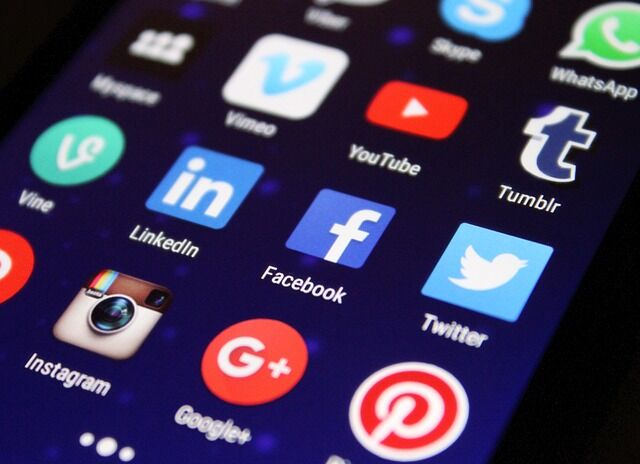Embarking on the journey of publishing your book is an exciting adventure, but it can also feel overwhelming with the multitude of options available. In this humanized guide, we’ll explore the various types of publishing, their pros and cons, and provide relevant examples to help you make an informed decision about the best path for your book.
Traditional Publishing: The Classic Route
Traditional publishing involves submitting your manuscript to established publishing houses, who handle everything from editing to marketing. The key advantage is the support and expertise you receive throughout the process. However, the competition is fierce, and it can take time to find a publisher. Notable examples of traditionally published books include J.K. Rowling’s “Harry Potter” series, Stephen King’s “The Shining,” and Harper Lee’s “To Kill a Mockingbird.”
Pros:
- Professional support: Traditional publishers provide a team of professionals who handle editing, cover design, marketing, and distribution.
- Credibility and validation: Being traditionally published lends credibility to your work and can open doors to wider distribution and bookstore placement.
- Advance and royalties: Traditional publishers typically offer an advance payment and royalties based on book sales.
Cons:
- Competitive and selective: Traditional publishers receive numerous submissions and may reject many manuscripts, making it harder to secure a publishing deal.
- Longer publishing timeline: The traditional publishing process involves several stages, including manuscript revisions and marketing plans, which can extend the time before your book reaches readers.
- Less control over creative decisions: Authors may have limited input on cover design and other creative aspects.
Self-Publishing: Empowering Authors
Self-publishing puts you in control of your book’s destiny. While publishing through this type of publishing, you have the freedom to oversee every aspect, from editing to cover design. The main advantage is the speed at which you can publish your work, without the need for traditional gatekeepers. Successful self-published authors like Andy Weir (“The Martian“) and E.L. James (“Fifty Shades of Grey”) have achieved remarkable success through this route.
Pros:
- Full creative control: Self-publishing allows authors to make all decisions about their book, including cover design, formatting, and pricing.
- Faster publication: Self-publishing platforms enable authors to publish their work quickly and make it available to readers.
- Higher royalty rates: Self-published authors typically receive higher royalty rates compared to traditional publishing.
Cons:
- Self-promotion and marketing: As a self-published author, you are responsible for marketing and promoting your book, which can be time-consuming and challenging.
- Limited bookstore distribution: Self-published books may face challenges in securing bookstore placement and distribution through traditional channels.
- Perception challenges: Some readers may have biases against self-published works, making it important to invest in professional editing and cover design to enhance the quality of your book.
Independent Publishing: Embracing Creativity and Collaboration
Independent publishing allows authors to establish their own publishing companies or work with small independent presses. This type of publishing offers creative freedom and the chance to collaborate with like-minded authors and publishing professionals. Graywolf Press is a notable independent publisher known for its commitment to publishing exceptional literary works by emerging authors.
Pros:
- Creative freedom: Independent publishing allows authors to explore unique ideas and genres without conforming to traditional market trends.
- Collaborative environment: Working with independent publishers or establishing your own publishing company provides an opportunity to collaborate with like-minded authors and publishing professionals.
- Niche audience targeting: Independent publishers often specialize in specific genres or niches, allowing authors to reach a dedicated readership.
Cons:
- Limited resources: Independent publishers may have fewer resources compared to traditional publishing houses, resulting in a smaller marketing budget and distribution reach.
- Finding the right fit: Authors must carefully research and select independent publishers that align with their creative vision and goals.
- Building recognition: Independent publishers may not have the same level of brand recognition as traditional publishers, which can impact the visibility of your book.
Vanity/Subsidy Publishing: Proceed with Caution
Vanity or subsidy publishing involves authors paying a publishing company to produce their book. While this type of publishing provides an opportunity to see your work in print, it’s important to be cautious. Some companies may exploit authors, charging high fees without delivering quality services. Examples of vanity publishers include AuthorHouse and Xlibris. It’s essential to thoroughly research and consider the reputation and legitimacy of such companies before proceeding.
Pros:
- Opportunity for publication: Vanity publishing provides an avenue for authors to see their work in print and make it available to readers.
- Minimal rejection: Unlike traditional publishing, vanity publishing does not involve a rigorous selection process, allowing authors to publish their book without facing numerous rejections.
Cons:
- High costs: Vanity publishers often require authors to pay substantial fees for editing, cover design, and publishing services, which can result in significant financial investment.
- Quality concerns: Some vanity publishers prioritize profits over quality, leading to subpar editing, design, and production values.
- Limited distribution and marketing support: Vanity publishers may not provide extensive distribution networks or marketing efforts, making it challenging for authors to reach a wide audience.
Hybrid Publishing: Best of Both Worlds
Hybrid publishing combines elements of traditional and self-publishing. Authors partner with a publishing company that offers professional services like editing, design, and distribution, while still allowing creative control. ‘She Writes Press’ is an excellent example of a hybrid publisher that supports authors through the publishing process while maintaining author ownership.
Pros:
- Professional support with creative control: Hybrid publishers offer professional editing, design, and distribution services while allowing authors to retain creative control over their work.
- Enhanced distribution: Hybrid publishing often provides broader distribution channels compared to self-publishing alone.
- Credibility and quality assurance: Hybrid publishers often have selective criteria, ensuring a level of quality and increasing the perceived credibility of the published works.
Cons:
- Higher costs: Hybrid publishing may involve upfront fees or shared publishing costs with the publisher.
- Varying publishing agreements: Authors need to carefully review and understand the terms of their hybrid publishing agreements to ensure a fair and beneficial partnership.
- Limited acceptance: Hybrid publishers may have selective submission policies, making it essential to research and find reputable publishers that align with your goals.
Digital Publishing: Embracing the Digital Age
Digital publishing focuses on releasing books in electronic formats like e-books and audiobooks. It provides convenience and accessibility to a wide audience of readers who prefer digital content. Platforms such as Apple Books, Google Play Books, and Audible offer opportunities for authors to share their stories globally.
Pros:
- Global Reach: Digital publishing enables authors to reach a vast global audience through platforms like Amazon Kindle and Apple Books.
- Cost-Effective: Digital publishing eliminates the costs associated with printing, warehousing, and shipping physical books.
Cons:
- Market Saturation: The digital market is highly competitive, making it crucial to invest in effective marketing strategies to stand out.
- Reading Preferences: While digital books are popular, some readers still prefer the tactile experience of physical books.
Conclusion:
As you consider your publishing options, remember that each type has its advantages and considerations. Traditional publishing provides support and expertise, while self-publishing offers full control. Independent publishing encourages creativity and collaboration, but vanity publishing requires caution. Hybrid publishing blends tradition and independence, and digital publishing embraces the digital age. Consider your goals, resources, and creative vision to determine the best publishing path for your book. Embrace the possibilities and share your unique story with the world, knowing that the publishing landscape is diverse and ever-evolving.




